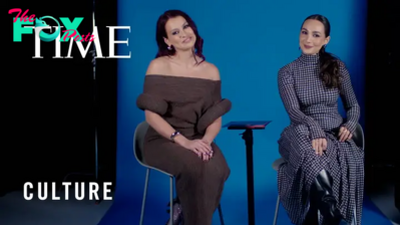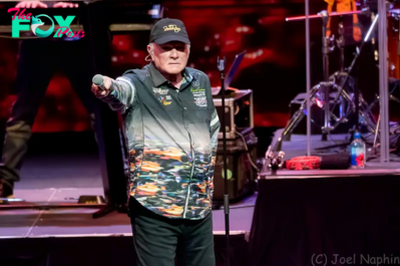Entertainment
Neeme Järvi conducts Mahler’s ‘Resurrection’ Symphony in Chicago – Seen and Heard Worldwide
 United Kingdom Mahler, Symphony No.2 in C minor, ‘Resurrection’: Mari Eriksmoen (soprano), Karen Cargill (mezzo-soprano), Chicago Symphony Refrain and Orchestra / Neeme Järvi (conductor). Symphony Heart, Chicago, 24.5.2024. (JLZ)
United Kingdom Mahler, Symphony No.2 in C minor, ‘Resurrection’: Mari Eriksmoen (soprano), Karen Cargill (mezzo-soprano), Chicago Symphony Refrain and Orchestra / Neeme Järvi (conductor). Symphony Heart, Chicago, 24.5.2024. (JLZ)

On this vacation weekend, it was a pleasure to listen to the Chicago Symphony provide Mahler’s Second Symphony underneath the path of Neeme Järvi. It was additionally a pleasure to seek out the home stuffed. Much more, the viewers was receptive and enthusiastic, evident within the ecstatic outburst close to the tip of the primary motion.
Järvi’s strategy confirmed greatest within the first three actions, the place he gave a strong studying of the rating with out resorting to sentimentality. His tempos have been crisp, the balances refined to deliver out contrapuntal passages with readability, and the quantity ranges made use of the sudden adjustments and, when marked within the rating, gradual shifts in depth. The primary motion had the rhythmic drive that the piece requires, and it was marked by the incisive fashion of the cellos and basses. Longer lyric traces within the woodwinds stood out for the cautious intonation. Repeated figures within the strings had the requisite percussiveness to serve the rating. The outcome was a robust studying of this motion that introduced out the sense of tragic loss that the composer supposed to convey.
Järvi had an identical regard for element in bringing out the lyric parts within the second motion. After the stormy conclusion of the primary motion, the fragile opening passages of this one drew consideration to the music. Because the phrases grew longer, Järvi attended to the balances that allowed secondary voices to emerge clearly. Textures which can be typically obscured have been audible because the piece took form with respect to the rating and the acoustics of the corridor.
Because the music unfolded, Järvi continued to concentrate to particulars. For instance, the pizzicato part later within the motion added to the timbral colours that Mahler introduced into the rating. Right here the richness of a well-structured pianissimo part refuted the composer’s remark disparaging the alfresco fashion of his early symphonies. Within the palms of a masterful conductor like Järvi, the differentiated timbres which can be a part of the rating made this efficiency compelling.
That is true for Järvi’s strategy to the Scherzo. His tempos have been a bit faster than these of another conductors, but the outcome was totally convincing in executing the perPetuum cellular accompaniment figures within the paraphrase of the track ‘Des Antonius von Padua Fischpredigt’. The woodwinds have been notably exact and clear in responding to Järvi’s path. Within the center part, the place Mahler quoted the Scherzo from his colleague Hans Rott’s Symphony in E main, the brass have been much less exact than elsewhere, and it might be the results of the tempos. Because the motion continued, these issues ceased, and the Scherzo ended with the incisiveness Järvi gave the primary motion.
These three actions set the stage for the final two, with the orchestral track ‘Urlicht’ providing textual and motivic cues for the Finale. Mezzo-soprano Karen Cargill gave form to the phrasing of the track, however the efficiency would have benefitted from stronger diction in articulating the textual content which units the tone for Mahler’s use of Klopstock’s ‘Auferstehen’ within the finale. However total, the outcome was good, and the refined lyricism of the track lingered within the moments of silence earlier than the crashing opening of the final motion. For that ending, Järvi formed every part from the instrumental passages on the opening to the choral ones that adopted. The work’s logic took form within the efficient studying that Järvi gave this difficult rating, as he led the forces with consuMMAte fashion.
The Chicago Symphony Refrain demonstrated its experience with well-voiced sonorities that supported the textual content, and this is because of James Okay. Bass, the visitor choral conductor who ready them. Soprano Mari Eriksmoen labored effectively with Karen Cargill within the duet passages. Exits and returns for the offstage passages have been dealt with as discreetly as attainable, and the expanded brass part added a lot. Most of all, the care that Järvi gave to the sooner actions was important, and the outcome was a resoundingly efficient, memorable efficiency.
James L. Zychowicz
Featured Picture: Neeme Järvi conducts Chicago Symphony Orchestra in Mahler’s Symphony No.2 © Nuccio DiNuzzo
-

 Entertainment2h ago
Entertainment2h agoThe Best Internet Memes About Elon Musk’s Tesla Robot
-

 Entertainment2h ago
Entertainment2h agoThe TikTok Duo Behind the Music in Moana 2 on Winning a Grammy and Working With Beyoncé
-

 Entertainment7h ago
Entertainment7h agoGladiator 3 Already in Works, Reveals Director
-

 Entertainment12h ago
Entertainment12h agoHow ‘Interior Chinatown’ Satirises Asians in Hollywood with Witty Social Commentary
-

 Entertainment23h ago
Entertainment23h agoHow to See Ava, Chiang Mai Night Safari’s Golden Tiger
-

 Entertainment1d ago
Entertainment1d agoDictionary.com Names ‚ÄòDemure‚Äô as Its¬ÝWord of the Year for 2024¬Ý
-

 Entertainment1d ago
Entertainment1d agoAnna Delvey Reunites With Ezra Sosa and Flips Him Off Ahead of ‘Dancing With the Stars’ Finale Return
-

 Entertainment1d ago
Entertainment1d agoMethods to Recharge as an Actor

























